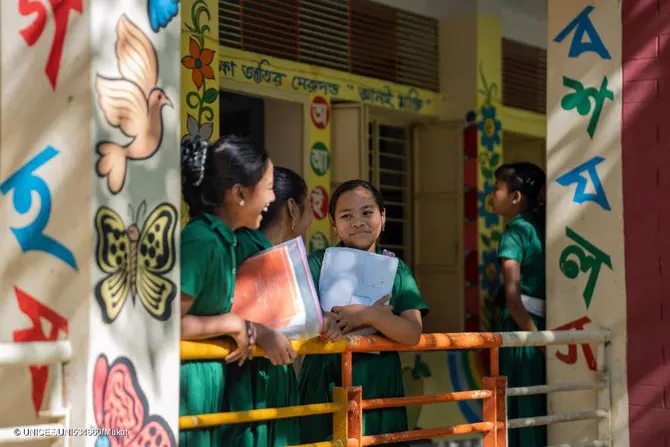The Bangladeshi government, in collaboration with UN agencies, has launched new measures to prevent child marriage by strengthening community engagement and ensuring more females complete their education.
The South Asian nation has one of the world’s highest percentages of child marriage, with the latest Bangladesh Bureau of Statistics survey showing that in 2023 alone 41.6 percent of young females were married before reaching the legal age of 18.
Data shows that child marriages increased in the aftermath of the COVID-19 pandemic. In 2022, 40.9 percent of females married before turning 18, while in 2021 and 2020 it was 32.4 percent and 31.3 percent, respectively.
The new measures, launched by the Ministry of Women and Children Affairs with UNICEF and the UN Population Fund on Wednesday, are a part of the joint Global Program to End Child Marriage by 2030 — in accordance with the UN’s Sustainable Development Goals. The UN has estimated that to meet the 2030 target, Bangladesh must ensure a 22-fold increase in its efforts because it is only recording a 2.1 percent reduction per year — which means it would take over two centuries to eliminate the problem.
The government aims to reach 6 million people with its awareness and life-skills programs, but it will run in only 10 districts. Keya Khan, director-general of women’s affairs at the ministry, told Arab News the government needs more support.
“The government alone can’t accomplish this task, and we need support from development partners here,” she said.
Since most child marriages result in pregnancy, the government has two programs to encourage women in underprivileged communities to give birth after the age of 20.
“Under these programs, we have been providing financial assistance to mothers aged between 20 and 35 … If they become mothers before 20, they will not be eligible to receive this … Already, 1.5 million women are enrolled,” Khan said.
“We have another flagship program named ‘Vulnerable Women Benefit,’ under which we provide 30 kg of rice every month to 1 million women across the country. This program covers women aged between 20 and 50.”
The ministry also tries to work at the grassroots level, engaging about 5,000 clubs for teenagers across the country.
“We have been providing training and aware-ness campaigns through these groups,” Khan said. “To prevent child marriage, in every district and subdistrict, there are committees formed with local government representatives. Whenever any inci-dents of child marriages are recorded, the com-mittee intervenes to stop them.”
Both the government and the UN have stressed the importance of keeping girls at school because this is a proven strategy to protect them from child marriage. “In this fiscal year, we launched a symbolic program in schools in every district … to make the children and their guardians aware,” Khan said.
“Our department organizes awareness meetings with villagers in this regard. We also want to make imams and marriage registrars aware in this regard, so that they don’t register any child marriages.”—AFP










